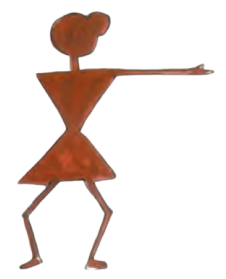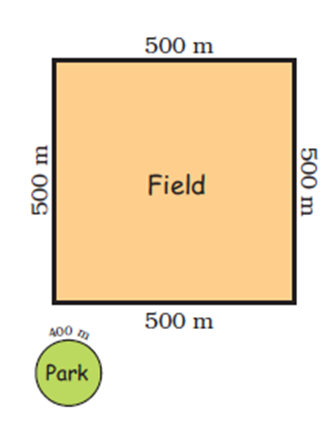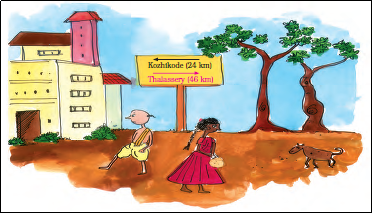Long And Short - Exercise-wise Questions and Answers For Class 4 Maths - Free PDF Download
FAQs on NCERT Solutions For Class 4 Maths Chapter 2 Long And Short - 2025-26
1. What key concepts are explained in the NCERT Solutions for Class 4 Maths Chapter 2, 'Long and Short'?
The NCERT Solutions for Chapter 2, 'Long and Short', focus on explaining the fundamental concepts of length measurement. Key topics covered include:
Introduction to standard units of length like centimetres (cm), metres (m), and kilometres (km).
The correct method for comparing the lengths of different objects.
Step-by-step solutions for converting units, such as changing metres to centimetres and vice-versa.
Solving word problems that involve the addition and subtraction of lengths.
2. How do you solve word problems involving distance as per the methods in NCERT Class 4 Chapter 2?
To solve word problems involving distance, you should follow a clear, step-by-step method. For example, to find the total distance run in multiple rounds around a park:
Identify the given information: distance of one round and the total number of rounds.
Calculate the total distance: Multiply the distance of one round by the total number of rounds.
Convert the units if required: If the distance is in metres (m) and the answer is needed in kilometres (km), convert it by using the relation 1000m = 1km.
Write the final answer with the correct unit.
3. What is the correct method for converting metres into centimetres in Class 4 Maths Chapter 2?
The correct method for converting metres (m) to centimetres (cm) is to use the standard conversion formula: 1 metre = 100 centimetres. To find the equivalent length in centimetres, you must multiply the number of metres by 100. For instance, to convert 5 metres to centimetres, the solution is 5 × 100 = 500 cm.
4. How do the NCERT Solutions for Class 4 Maths Chapter 2 help in solving exercise questions correctly?
These NCERT Solutions provide a detailed, step-by-step guide for every problem in the textbook. This helps you understand the correct methodology to arrive at the answer, not just the final answer itself. By following these solutions, you can learn how to structure your answers, where to apply specific formulas (like unit conversions), and how to avoid common mistakes, ensuring you are well-prepared for exams as per the 2025-26 CBSE syllabus.
5. Why is it important to convert all lengths to the same unit before adding or subtracting them?
It is crucial to convert all lengths to a single, common unit (like all in 'cm' or all in 'm') before performing addition or subtraction. This is because you cannot accurately combine different units directly. For example, adding 2 metres and 50 centimetres is not 52. You must first convert 2 metres to 200 centimetres, then add it to 50 centimetres to get the correct answer of 250 cm. This ensures your calculation is logical and mathematically accurate.
6. How do we solve a problem that involves measuring a line that doesn't start from the '0' mark on a ruler?
If a line's measurement does not start from the '0' mark, the correct method is to subtract the starting reading from the ending reading. For example, if a line starts at the 2 cm mark and ends at the 9 cm mark on a ruler, its actual length is found by calculating 9 cm - 2 cm = 7 cm. Simply reading the end mark would give an incorrect answer.
7. How can the problem-solving skills from Chapter 2 'Long and Short' be used in everyday life?
The skills learned from solving problems in this chapter have many real-world applications. For example, you can use these methods to:
Measure your own height and compare it with friends.
Calculate the distance from your home to school.
Estimate the length of a room or a piece of furniture before moving it.
Understand distances on maps, which are often shown in kilometres.
8. What is the step-by-step method to find the difference between two lengths given in different units?
To find the difference between two lengths in different units, such as 3 metres and 120 centimetres, follow these steps:
Choose a common unit: It's often easier to convert the larger unit to the smaller one. Here, we convert metres to centimetres.
Perform the conversion: Convert 3 metres to centimetres: 3 m × 100 = 300 cm.
Subtract the values: Now that both lengths are in centimetres, subtract the smaller value from the larger one: 300 cm - 120 cm.
State the final answer: The difference is 180 cm.








































